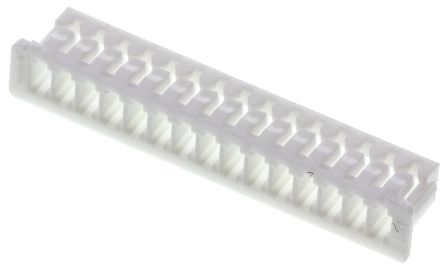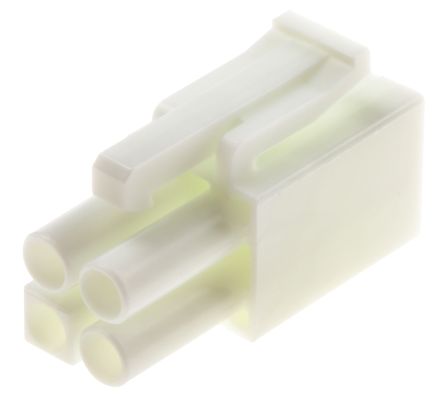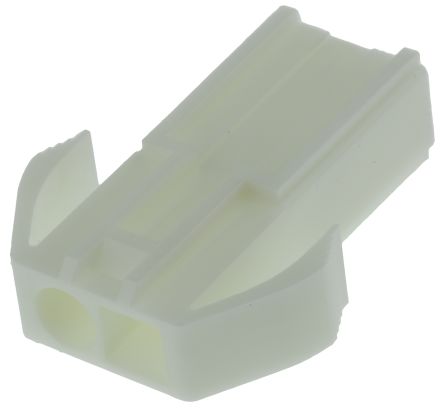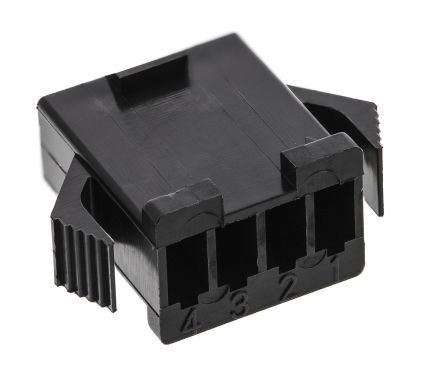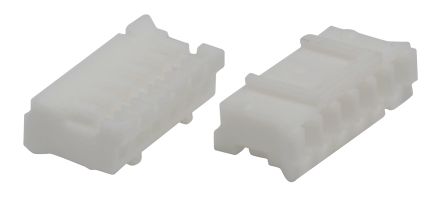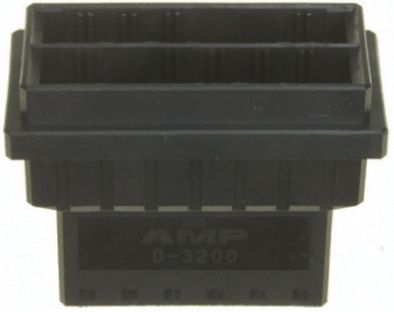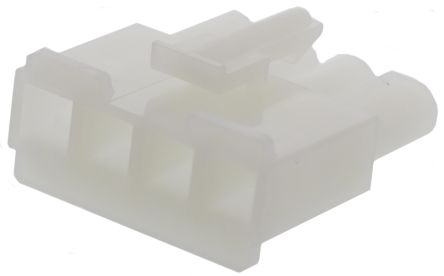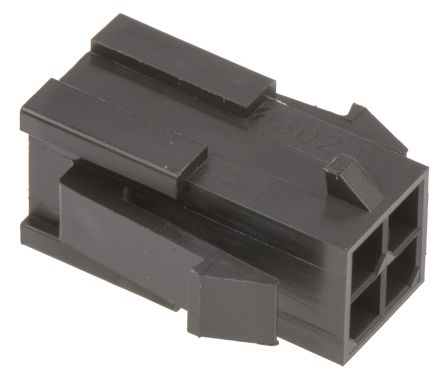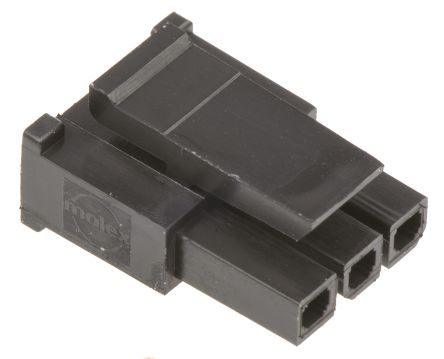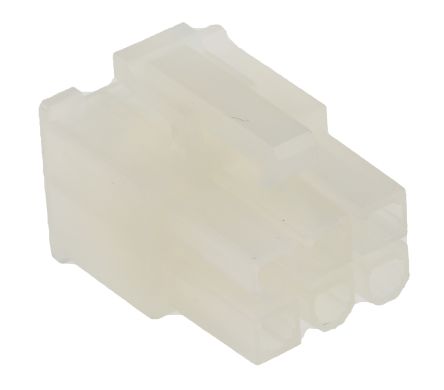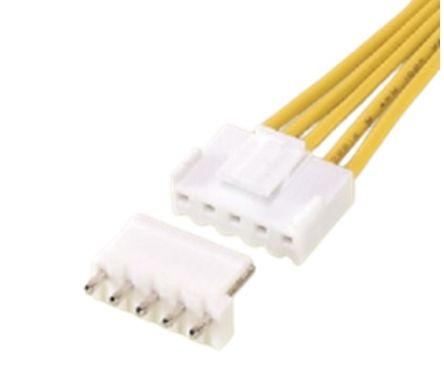- Automation & Control Gear
- Cables & Wires
- Enclosures & Server Racks
- Fuses & Circuit Breakers
- HVAC, Fans & Thermal Management
- Lighting
- Relays & Signal Conditioning
- Switches
- Batteries & Chargers
- Connectors
- Displays & Optoelectronics
- ESD Control, Cleanroom & PCB Prototyping
- Passive Components
- Power Supplies & Transformers
- Raspberry Pi, Arduino, ROCK, STEM Education & Development Tools
- Semiconductors
Wire Housings & Plugs
Crimp housings provide a receptacle for connectors when they are mounted onto a printed circuit board. PCB connectors are used to link different printed circuit boards to one another or to allow a cable to be connected to a PCB.
How Do Crimp Housings Work?
Crimp housings are moulded according to the type of PCB connector they are designed to fit. The connector is mounted on to the PCB using the crimp housings, and the housing provides some level of protection for the connection. PCB connector housings also include space for the PCB connector contacts, to allow the current of electricity to flow.
How to Choose the Right Crimp Housing?
1. Determine Application Requirements
- Identify the specific application for which the crimp housing will be used, such as automotive, telecommunications, or industrial equipment.
- Assess the required electrical and mechanical performance, including current rating, voltage rating, and environmental conditions.
2. Pin Count and Pitch
- Select the appropriate number of pins based on the connection needs.
- Choose the correct pitch (distance between pins) to ensure compatibility with existing connectors and PCBs.
3. Material Selection
- Consider the materials used for the crimp housing, focusing on temperature resistance, chemical resistance, and mechanical durability.
- Common materials include Nylon (PA66), Polybutylene Terephthalate (PBT), and Liquid Crystal Polymer (LCP).
4. Locking Mechanism
- Opt for crimp housings with reliable locking mechanisms to ensure a secure connection.
- Types of locking mechanisms include friction locks, latches, and snap-in designs.
5. Wire Gauge Compatibility
- Verify that the crimp housing is compatible with the wire gauge being used.
- Ensure the crimp housing can accommodate the range of wire sizes required for the application.
6. Environmental Protection
- Determine if the application requires protection against dust, moisture, or other environmental factors.
- Consider crimp housings with IP ratings that provide the necessary level of protection.
7. Ease of Assembly and Maintenance
- Select crimp housings that offer ease of assembly and disassembly for maintenance purposes.
- Consider options that allow for quick replacement or repair without the need for soldering.
8. Brand and Compatibility
- Choose crimp housings from reputable brands to ensure reliability and compatibility with other components.
- Verify compatibility with connectors, terminals, and other system components.
9. Cost and Availability
- Evaluate the cost-effectiveness of the crimp housing, balancing performance requirements with budget constraints.
- Check the availability of the crimp housing to ensure timely procurement for production schedules.
10. Compliance and Standards
- Ensure the crimp housing meets relevant industry standards and certifications.
- Consider standards such as UL, CSA, and RoHS compliance for safety and environmental considerations.
Types of Crimp Housings
The main way in which PCB connector housings differ is in the number of contacts they accommodate. This can range from just one contact to over 100. They can also be made from a range of materials, depending on the level of protection required for the connector.
Materials
Common materials used for PCB connector housings include:
- Nylon 9T: Known for its high temperature resistance, excellent mechanical strength, and resistance to chemicals. Ideal for applications involving reflow soldering.
- Nylon 6T: Offers good thermal stability, mechanical strength, and chemical resistance. Suitable for both wave soldering and reflow soldering.
- Liquid Crystal Polymer (LCP): Provides exceptional thermal stability, mechanical strength, and low moisture absorption. Often used in high-temperature and high-performance applications.
- PA66 (Polyamide 66): Features good mechanical properties, chemical resistance, and thermal stability. Commonly used for wave soldering applications.
Gender
- Male Connectors (Plugs): These connectors have pins or blades that insert into the corresponding female connector. Used for initiating the connection.
- Female Connectors (Receptacles): These connectors have sockets or holes to receive the pins or blades of the male connector. Used for completing the connection.
Mounting Type
The mounting type of PCB connector housings determines how they are attached to the PCB:
- Through-Hole Mounting: Connectors are inserted into holes drilled in the PCB and soldered onto the opposite side. Provides strong mechanical bonds and is suitable for high-stress applications.
- Surface-Mount Technology (SMT): Connectors are mounted directly onto the surface of the PCB. Allows for higher component density and automated assembly processes.
- Panel Mount: Connectors are mounted on a panel or enclosure rather than directly on the PCB. Common in applications requiring secure and accessible connections from the exterior.
Ordering and Delivery Information
Visit RS Singapore's online platform to explore our wide range of wire housings and plugs from top brands. Add your selected items to your basket for next-day delivery, or opt for pick-up at your nearest RS branch. Prefer to place your order by phone? Call us at +65 6865 3400 for personal assistance.
For detailed information on all available delivery options, please visit our delivery information page.
